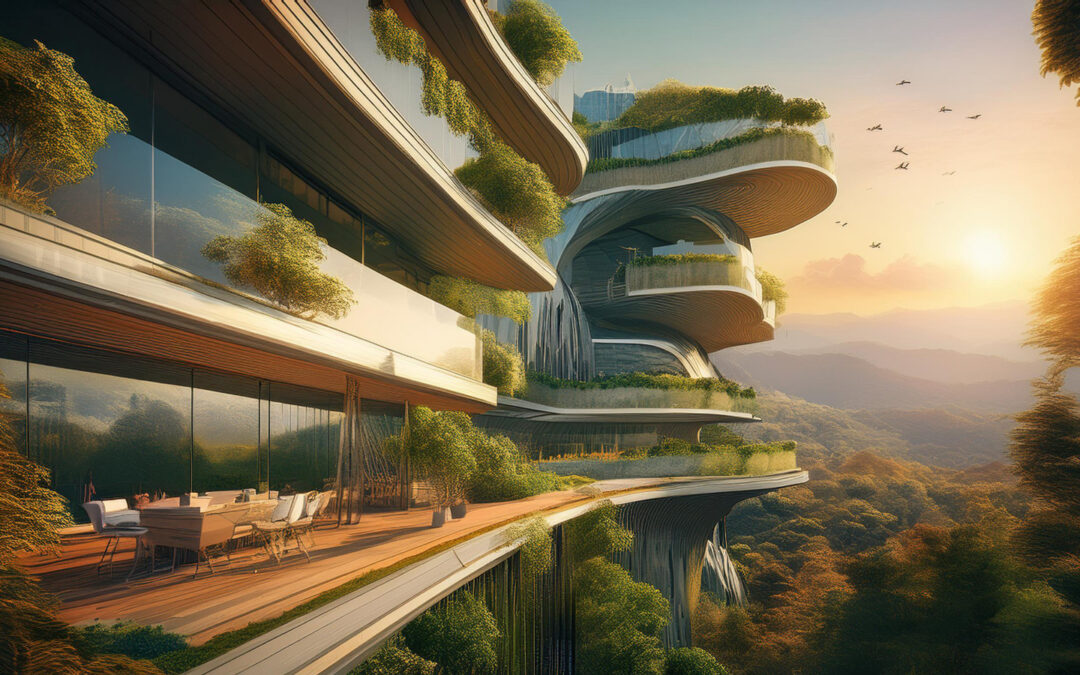Sustainable Architecture: Building a Greener Future
In today’s world, sustainability is more important than ever. The built environment plays a significant role in climate change, resource depletion, and pollution. Sustainable architecture offers a solution by designing and constructing buildings that minimize their negative environmental footprint while promoting human health and well-being.
The Benefits of Sustainable Design
Sustainable architecture is a new and emerging trend in the architecture and design world and there are a lot of reasons to get excited about its potential. Some of the top benefits include:
- Environmental Impact: Sustainable buildings reduce energy consumption, water usage, and waste production. They often incorporate renewable energy sources, such as solar panels or wind turbines, and prioritize energy-efficient materials and systems. This helps to mitigate climate change and protect natural resources.
- Health and Well-being: Sustainable design fosters healthier living spaces by improving indoor air quality, providing natural light, and promoting connection with the outdoors. This can lead to improved physical and mental health for building occupants.
- Economic Value: Sustainable buildings can increase property values and reduce operating costs over time due to their energy efficiency and lower maintenance requirements. This makes them a sound investment for both homeowners and businesses.
Emerging Trends and Technologies
Sustainable architecture is constantly evolving, with new trends and technologies emerging regularly. Inside of this sustainable design space there are many micro-developments occurring, of which some of the top innovations are:
- Passive Design: This approach utilizes natural elements like sunlight, wind, and water to regulate temperature and lighting within a building, minimizing the need for mechanical systems. Passive design can significantly reduce energy consumption and improve indoor comfort.
- Biomimicry: Inspired by nature, biomimicry seeks to emulate the efficient and sustainable strategies found in the natural world. For example, buildings can be designed to mimic the cooling and ventilation systems of termite mounds or the structural efficiency of tree branches.
- Renewable Energy: Integrating renewable energy sources, such as solar panels, wind turbines, and geothermal systems, can significantly reduce a building’s reliance on fossil fuels. Renewable energy not only helps to reduce greenhouse gas emissions but can also lower energy costs.
- Circular Economy: The circular economy aims to minimize waste and pollution by keeping resources in use for as long as possible. In the context of sustainable architecture, this means using recycled materials, designing buildings for easy disassembly, and promoting reuse and repair.
Conclusion
Sustainable architecture is a powerful tool for creating a more sustainable future. By incorporating eco-friendly practices and innovative technologies, we can design buildings that are not only beautiful and functional but also beneficial to both our planet and ourselves. As the world continues to face the challenges of climate change and resource depletion, sustainable architecture offers a promising path forward.

